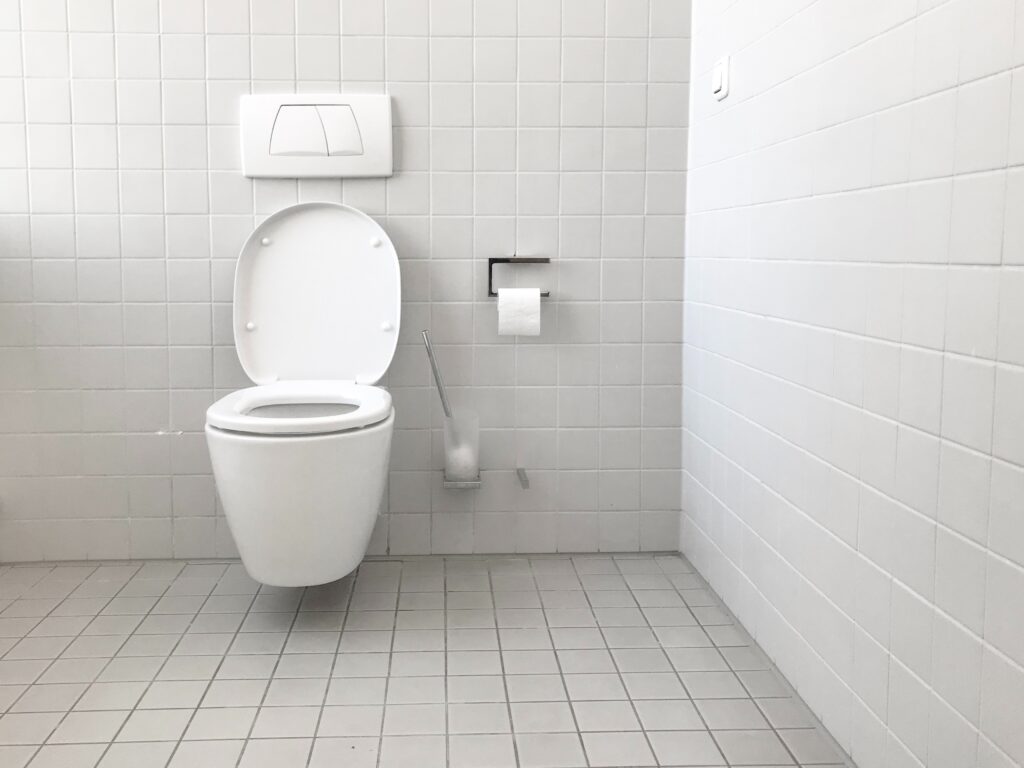Prostatic artery embolization is an FDA-approved, non-surgical treatment for an enlarged prostate. It can relieve lower urinary tract symptoms (LUTS) associated with Benign Prostatic Hyperplasia (BPH), without the risk for sexual side effects or other serious complications. But how long does prostate artery embolization last? Here's what you need to know.
What is PAE?
The PAE procedure deposits tiny particles via catheter to inhibit blood flow to your prostate. Once blood flow no longer reaches your enlarged prostate, it begins to shrink, relieving LUTS. During the procedure, you'll be under moderate sedation, so you will be comfortable while avoiding general anesthesia like with traditional surgery. In all, the PAE procedure lasts about two hours. And, since it's done in an outpatient setting, you can also avoid overnight hospital stays.

Results: How long does prostate artery embolization last?
Study results presented at last year's Society of Interventional Radiology's Annual Scientific Meeting revealed that1000 North American patients who underwent PAE reported sustained LUTS relief for up to six years.
In announcing his results, senior study author Dr. Shivank Bhatia said, "Our study shows that PAE is a highly effective treatment whose long-term outcomes include sustained LUTS relief and significant improvement in quality of life."
And, he notes, this information is important since, "Of 18 million men in the U.S. eligible for BPH treatment, many avoid all treatments because of the widely known risks of surgery, particularly sexual side effects and leakage. PAE avoids these risks while achieving long-term positive clinical outcomes."
Ready to see if PAE is your key to long-lasting LUTS relief? Click here to request an appointment at the Texas Prostate Institute. When you come in, we'll review your procedure candidacy!
If you've been diagnosed with benign prostatic hyperplasia (BPH, also known as an enlarged prostate), you may be researching treatment options. After all, this condition can cause disruptive lower urinary tract symptoms (LUTS) that range from mild to severe. So, while some men may rush to seek medical intervention, others may prefer to manage their condition with lifestyle changes.
Now, both options can help you find relief from BPH. But will that relief last? And what happens if you don't treat BPH? Keep reading to find out!

What is BPH?
BPH is a non-cancerous condition in which your prostate gland enlarges. As a result, the prostate tissue puts pressure on the urethra, causing disruptions to urinary flow or making you experience more frequent urinary urgency.
Other common symptoms include weak urinary flow or the need to urinate frequently through the night. Men with BPH may also find it difficult to start or stop their urinary flow. And having BPH puts you at an increased risk for urinary tract infections.
What Happens if You Don't Treat BPH?
According to the experts at Johns Hopkins University, you could end up with a thickened bladder; residual urine that becomes infected; bladder stones; and kidney damage if you don't treat BPH. Additionally, without treatment, BPH could leave you with substantial damage to the urinary tract.
Given all these potential complications, why do so many men delay or avoid treating BPH each year? The answer is simple. In the past, available treatment options carried serious health risks, including sexual side effects and the potential for urinary leakage. Today, however, you can treat an enlarged prostate with Prostatic Artery Embolization (PAE), a minimally invasive procedure that shrinks the prostate, relieves LUTS, and does not cause serious side effects.
Ready to see if you are a good candidate for PAE? Click here to request an appointment at the Texas Prostate Institute. We'll review your unique symptoms and health profile, and provide personalized recommendations for how you should treat BPH.
In the same week that we learned Princess Kate had to have stomach surgery, King Charles revealed that he will enter hospital to treat his benign prostate hyperplasia (BPH, also called an enlarged prostate.) Now, unlike Kate, who asked for privacy, King Charles was eager to share information about his condition. And, while we love the transparency, we can't help but wonder. Why would the King of England elect to have a procedure that requires an overnight hospital stay when we can treat BPH with Prostate Artery Embolization (PAE), a minimally invasive procedure that allows men to avoid overnight hospital stays!

What causes an enlarged prostate?
BPH develops when you experience accelerated prostate cell growth that increases the size of the gland. In turn, the prostate pushes against your urethra, causing disruptive lower urinary tract symptoms (LUTS.)
Now, we don't know exactly why your prostate cells start growing faster. But we do know that there's a link to increased production of the hormone dihydrotestosterone (DHT). And, since men's DHT levels rise with age, BPH is a common problem for older gentleman. So, since King Charles is now 75, it's not surprising that he's seeking enlarged prostate treatment.
Enlarged Prostate Treatment Options
Some men are able to manage BPH symptoms with lifestyle changes or medications. But, not everyone will find relief from these options. In the past, that meant you'd need surgery to relieve the effects of an enlarged prostate. Today, however, there is a less invasive option that offers relief with fewer side effects and without general anasthesia or overnight hospital stays. And it's called PAE!
PAE in Texas
PAE is a minimally invasive procedure that uses catheter-based technology to access your prostate arteries. Treatment is delivered through a small incision, typically in your groin or wrist, rather than via a larger surgical incision. Once in place, we use the catheters to deliver small particles that block the blood supply to the prostate, causing it to shrink.
Compared to prostatectomy, (surgical removal of your enlarged prostate), PAE is a less traumatic treatment option with fewer side effects and a faster recovery time. Ready to see if PAE is your best enlarged prostate treatment option?
Click here to request an appointment
The Food and Drug Administration now approves PAE, or prostatic artery embolization, as a treatment for BPH, benign prostatic hyperplasia. (Also known as prostate enlargement.) Now, there are several ways to relieve the Lower Urinary Tract Symptoms (LUTS) associated with BPH, including lifestyle changes, medications, and even surgery. So, who is a good candidate for prostatic artery embolization? We'll explain in a minute. But first, let's take a closer look at what's involved with this procedure.

What does PAE involve?
Prostate artery embolization is a non-surgical procedure to alleviate the urinary symptoms associated with BPH. During the procedure, we use embolic materials (tiny particles that are safe for injection) to reduce blood flow to your prostate. By doing so, we can cause it to shrink, quickly relieving LUTS.
In order to get the particles to their target zone, we thread a thin wire through an artery in your wrist or groin, gaining access with a small incision. We then guide the wire toward your prostatic arteries with the help of advanced imaging. Once it's in the right spot, we inject the embolic materials and blood flow to your prostate is immediately reduced.
In total, this outpatient procedure lasts about two hours, and can be performed with moderate sedation. That means you'll be awake but comfortable, and you can avoid general anesthesia and hospitalization.
Who is a candidate for prostate artery embolization?
PAE is a minimally invasive procedure and comes with the risk of far less serious side effects than surgical procedures. However, some men may experience hematoria (temporary presence of blood in the urine), rectal bleeding, and the sudden inability to empter their bladders after PAE. As such, this procedure is not for men who are able to relieve BPH symptoms with lifestyle changes or with medications.
So, who is a candidate for prostate artery embolization? PAE is an option for men who suffer from BPH and who can't find symptom relief from other non-surgical procedures. Good PAE candidates also include men who prefer to or must avoid invasive surgical procedures. However, in order to be a candidate for prostate artery embolization, you must have acceptable kidney function.
Ready to see if PAE is your pathway to BPH relief? Click here to request an appointment with our prostate specialists in Texas. When you come into the office, we can determine your PAE candidacy!
When men choose to treat Benign Prostatic Hyperplasia (BPH, or prostate enlargement) with Prostatic Artery Embolization, they want to know about the cost of the PAE procedure. Now, as a minimally invasive treatment option that relieves lower urinary tract symptoms (LUTS) related to BPH, it is already more cost-effective than surgical procedures. Plus, it comes with fewer risks for side effects, and allows you to avoid a costly overnight hospital stay. Recently, however, a study in the journal Radiology explored the true cost effectiveness of the PAE procedure, given a variety of short and long-term considerations. And what they discovered is so exciting, our specialists at the Texas Prostate Insitute just couldn't wait to share the results.

Cost of PAE Procedure: Factors to Consider
First things first. This study compared PAE's effectiveness at relieving BPH symptoms to both surgical procedures and other treatment options, including medical management. They discovered that PAE is the most effective minimally invasive BPH treatment. And, they revealed that it delivers similar results to surgery, without the risk of impotence or other morbidities.
Next, it considered the immediate cost of the procedure. But it also looked at factors such as potential complications; recurring symptoms that would require medical treatment; and overall quality and length of life improvements. Guess what? As the authors concludes, PAE was both the "most effective treatment strategy" and "the most cost-effective treatment strategy" in a study that examined five other treatment options.
If you think that's great news, you're not alone: we do too! And, with that, we invite you to Click here to request an appointment with our Texas Prostate specialists, to see if PAE is right for you!
Prostatic artery embolization, or PAE, is a new, FDA-approved treatment for benign prostatic hyperplasia, or an enlarged prostrate. It offers relief from Lower Urinary Tract Symptoms (LUTS), without medications or invasive surgery. As a result, it’s an increasingly popular treatment for men who aren’t eligible for surgery, who prefer to avoid an operation, or who haven’t found relief from other treatment options. But how many years does prostate artery embolization last? Keep reading to find out.

What is PAE?
PAE is a minimally invasive procedure performed via cather, and inserted through a small puncture in your groin. Next, the catheter is guided toward the artery that supplies blood to your prostate. Once in place, we deposit tiny particles to plug the artery and block blood flow to the most impacted areas of your prostate. Following your procedure, your prostate will shrink over the course of several months. And, by the time six months have passed, it should have shrunk by up to 40% in size, resulting in significant relief from symptoms such as difficulty passing urine.
Because the procedure is minimally invasive, you won’t need general anesthesia. Instead, we’ll provide IV medications to keep you calm and comfortable. This allows you to go home on the same day as your procedure. And it means you can avoid an overnight hospital stay.
How many years does prostate artery embolization last?
As we just explained, it can take up to six months for you to experience the full benefits of a PAE procedure. (Although improvements should be noticeable within one to two months of the procedure.) Now, at that six month mark, approximately 80% of patients will have achieved satisfactory relief. But, once achieved, how long will the relief last?
Well, here’s the story. PAE is a relatively new treatment option for an enlarged prostate. As such, we don’t have enough long term data to conclusively answer how long PAE results last. What we do know, however, is that current studies show PAE procedure results last for a minimum of 3-4 years. And, as we conduct further studies, we may find that they last even longer than that.
Ready to find relief from urinary frequency, night-time waking, and the other unwanted effects of an enlarged prostate? We’re here to help! Click here to request an appointment with the Texas Prostate Institute, and find out for yourself how many years does prostate artery embolization last!
If you're considering Prostatic Artery Embolization for an enlarged prostate, you may wonder, "What's the success rate for PAE?" And who is a good candidate for this treatment option?
Well, at our Texas Prostate Institute, we use (PAE) to treat men who suffer from Lower Urinary Tract Symptoms (LUTS) linked to prostate enlargement. And we use this method because it offers a minimally invasive, FDA-approved pathway to lasting relief. Let's explore why and how it works!

Why does the prostate become enlarged?
The prostate gland sits at the narrow neck of the bladder, and it surrounds the urethra. As part of your reproductive system, the prostate produces seminal fluid. But, for some reason, the prostate's size increases with age, resulting in benign prostatic hypertrophy (BPH), the medical term for an enlarged prostate.
As this happens, the enlarged gland presses on the urethra and bladder. As a result, you may:
- Lose the ability to urinate or to fully empty your bladder
- Experience weak urinary flow, or dribbling as your peeing comes to an end
- Become incontinent
- Suddenly need to pee, without any warning
- Wake up twice or more each night because you have to urinate
- Need to strain or experience pain with urination
- Face a delay when trying to release urine
- Contract frequent urinary tract infections (UTIs), experience kidney and bladder damage, and form bladder stones.
PAE (prostate artery embolization) and BPH
The FDA approves PAE as a way to treat BPH. This is an outpatient procedure that relieves BPH symptoms by blocking the flow of flow to the prostatic arteries. And, because we perform this procedure with an x-ray-guided catheter, we're able to deposit embolic material that blocks those arteries without open surgery. That way, your prostate shrinks, your symptoms improve, and your recovery period is much more manageable.
What's the success rate for PAE?
This procedure is highly effective. In fact, within one year of receiving prostatic artery embolization, more than 90% of men are still experiencing BPH relief. And they're getting that relief without risking sexual side effects. Even better? PAE appears to deliver lasting relief. Because, though the procedure is too new for us to have extensive long-term data, recent studies suggest that 82% of men were still experiencing relief three years after having a PAE procedure.
Prostatic Artery Embolization: who is a candidate?
This procedure isn't for everyone. But you may be a PAE candidate if medications and lifestyle changes aren't relieving your symptoms; if you aren't eligible for surgery, or if your prostate gland is too enlarged for common surgical procedures. Plus, PAE can be a great treatment if you've already has an unsuccessful surgery for BPH.
Ready to discover the success rate for PAE? Learn more by clicking here to request an appointment.
Here at the Texas Prostate Institute, our interventional radiologists use arterial embolization to treat prostate enlargement. But what's involved in this procedure? Well, we use embolization to block the flow of blood to targeted body parts in order to deliver therapeutic benefits. And we accomplish that goal by injecting embolic material through a catheter to your arteries or veins. In turn, we're able to cut off the movement of blood movement without impacting your overall health.
Embolization has been used since the 1970s, treating everything from varicose veins to fibroids. Recently, however, advancements in technique allowed the FDA to approve this treatment for reducing the side effects of prostate enlargement. Here's how that works!

Understanding Arterial Embolization
AE is a minimally invasive procedure that allows you to avoid general anesthesia. Plus, most patients won't need to stay overnight in the hospital, and their post-procedure recovery period is easier than a post-surgical recovery.
As we reviewed earlier, interventional radiologists have spent years fine-tuning the way we perform this procedure. In the process, we've discovered many new therapeutic targets, including relief for varicocele (varicose veins in the scrotum) and for benign prostatic hyperplasia (BPH, or an enlarged prostate.) And, when we treat an enlarged prostate using AE, it's referred to as Prostate Arterial Embolization (PAE).
Choosing PAE Treatment in Texas
Now that the FDA has approved AE for BPH, it's a welcome treatment option since it offers a less invasive way to relieve LUTS (lower urinary tract symptoms). As a result, we're now able to help many more patients avoid surgery or medications. For that reason, we invite you to click here to request an appointment with our interventional radiologists in Texas. Together, we can determine if you are a candidate for this less invasive BPH treatment option.
If you want to treat BPH (Benign Prostatic Hyperplasia) it's important to research all your options. But what is BPH, how will you know if you have this condition, and when is it time to call your doctor? This post provides answers to all these questions, along with critical information on a new, minimally invasive treatment option.

What is BPH?
This common condition can lead to a variety of disruptive symptoms due to an enlarged prostate gland. While these symptoms vary, they most commonly; include Lower Urinary Tract Symptoms (LUTS) such as:
- The sudden, urgent need to urinate
- Incontinence
- Nocturia, (waking at least twice a night to urinate)
- Difficulty getting your urinary flow to start, or straining to release urine
- Painful urination
- Incomplete bladder emptying with urination
- Dribbling flow towards the end of urination
- Returning UTIs (Urinary Tract Infections)
- Bladder stones
- Blood in your urine
- Reduced bladder capacity
What Causes an Enlarged Prostate?
There is not one clear cause for BPH. However, age, testosterone levels, and testicular cell changes increase the risk for an enlarged prostate. Because there are so many potential causes, most men experience at least some prostate enlargement after turning 40. Then, by the time they turn 80, nearly all men will develop BPH.
Do I Need to Treat BPH?
The decision to treat prostate enlargement depends on your quality of life. Then, symptom severity can determine the appropriate course of treatment. Initially, you may find relief by making small lifestyle changes that include increasing exercise, limiting alcohol and caffeine, and using the restroom as soon as you feel the need to urinate.
Over time, though, you may require medical support to find LUTS relief. And, while we used to treat BPH with surgery or prescription medication, we can now provide relief with minimally invasive PAE (prostatic artery embolization.)
Finding LUTS Relief with PAE
Now that the FDA and American Urologic Association approve PAE to treat BPH, we offer this minimally invasive, same-day, outpatient procedure at the Texas Prostate Insitute. Our interventional radiologists use PAE to relieve BPH symptoms with minimal risks for sexual side effects or incontinence. Plus, we can perform this procedure by inserting a small catheter into your wrist, avoiding large incisions. Next, guided by X-ray technology, we insert beads that block blood flow to your prostate so that it shrinks within two weeks of your PAE procedure. In turn, you should notice an improvement in BPH symptoms, and your sexual health may also benefit.
Ready to treat BPH without surgery or added side effects? Click here to request an appointment today. We'll review your BPH symptoms and help you decide if PAE is your best treatment option.
If you have BPH, (short for benign prostastic hyperplasia and also known as prostate enlargement), you may be seeking BPH treatment. Today, there are several ways to treat this condition. However, if you want to explore the main BPH treatment that avoids surgery, keep reading this post, as our Houston and Dallas interventional radiologists give you a better understanding of how they can relieve your symptoms.

What is Benign Prostatic Hyperplasia?
Men with this condition have an enlarged prostate gland. And, to get a BPH diagnosis, that enlargement could result from a variety of causes, excluding cancer.
Following that enlargement, you may experience LUTS (lower urinary tract symptoms) due to the prostate gland's location in your body. You see, since this walnut-shaped gland sits at the neck of your bladder, surrounding the urethra, any change in size can impact your urination patterns. And that becomes clear when you explore the most common complaints associated with an enlarged prostate.
BPH Symptoms Revealed
Two common symptoms of BPH are losing the ability to urinate or experiencing urinary dribbling at the end of a bathroom visit. Other symptoms of an enlarged prostate may include:
- Losing the ability to fully empty your bladder
- Incontinence
- Waking up two or more times at night to urinate
- Blood in your urine
- Pain with urination
- Delayed urination onset
- Having to suddenly and urgently need to urinate
BPH Treatment Options
The best way to relieve LUTS is by treating BPH. Today, there are several available treatment options; the one you choose should depend on your symptom severity and overall health and lifestyle. Initially, you may manage your condition with certain lifestyle changes. Some helpful ways to manage BPH through lifestyle include urinating on a regular schedule, even when you don't need to, or sooner if you feel an urge. (And you should answer that call immediately.)
Also helpful? Pay close attention to your choice of beverage, reducing alcohol and caffeine and avoiding them entirely in the evening. Furthermore, try to cut off all fluid intake two hours before you want to go to sleep. And, throughout the rest of the day, sip small amounts of fluid at regular intervals instead of guzzling a big beverage all in one sitting. Now, try to exercise regularly and reduce your tension, since remaining sedentary and feeling stressed can make symptoms worse. Finally, limit use of antihistamines or decongestant medications, since both can worsen lower urinary tract symptoms.
Medications for BPH Treatment
Certain medications, including finasteride and dutasteride, lower production of hormones in the prostate, thereby reducing the size of the gland. However, with these treatment options, you'll have to wait between three and six months before your symptoms improve.
Another option? Alpha-1 blockers, a group of blood pressure-lowering medications, can also help BPH symptoms by relaxing the muscles in the bladder and prostate, reducing barriers to urination. However, these medications may interact with other prescription drugs, or cause additional side effects. For that reason, a new, non-surgical BPH treatment known as Prostatic Artery Embolization (PAE) is growing in popularity,
Surgery Free BPH Treatment
PAE is now an FDA-approved, outpatient BPH treatment option available at the Houston and Dallas locations of the Texas Prostate Institute. Now, not every patient is a PAE candidate. Instead, we recommend this procedure for those who experience ongoing BPH symptoms after trying medication, or for those who wish to avoid surgery or who are not medically cleared for invasive procedures.
Ready to find relief from LUTS and other effects of benign prostatic hyperplasia? When lifestyle measures and medications fail, non-surgical relief is still available. Click here to request an appointment. When you come in, we can discuss PAE as a BPH treatment.







